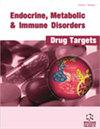糖尿病和 1 型糖尿病:一个未知的新问题
IF 2
4区 医学
Q3 ENDOCRINOLOGY & METABOLISM
Endocrine, metabolic & immune disorders drug targets
Pub Date : 2024-05-02
DOI:10.2174/0118715303314948240419060714
引用次数: 0
摘要
背景T1DM患者饮食失调的发病率高于普通人群,多达30-40%的年轻T1DM患者患有饮食失调,包括饮食失调症。饮食失调会恶化血糖控制,使胰岛素治疗管理变得更加困难。闭环系统(HCLS)具有很大的治疗灵活性;但是,适当的碳水化合物(CHO)计算仍然是调整胰岛素剂量的基本特征。病例报告一位 30 岁的 T1DM 女性患者(既往有药物滥用和抑郁综合征病史)因血糖控制和餐前大剂量管理不足而就诊。她开始了 CHO 计数课程,并进行了 HCLS 定位,血糖控制情况逐渐改善。在随访评估中,HCLS 数据显示血糖控制率逐渐下降,餐前血糖控制率也有所下降;患者还对体重增加产生了过度恐惧。糖尿病医生、精神科医生和营养师通过综合治疗,确诊患者患上了饮食失调症(diabulimia),这种饮食失调症的特点是碳水化合物摄入量和胰岛素容量逐渐减少和消失,并伴有不受控制的暴饮暴食。多学科方法(每两周进行一次饮食和精神评估、使用生物阻抗、固定 CHO 含量饮食)使患者获得了更好的糖代谢控制和疾病意识。结论T1DM 患者需要高度重视食物的质量和数量;因此,饮食失调的诊断可能具有挑战性。此外,目前还没有这方面的标准筛查方法。根据我们的经验,综合方法是解决这个新问题的根本,也是一种有效的策略。本文章由计算机程序翻译,如有差异,请以英文原文为准。
Diabulimia and Type 1 Diabetes: An Unknown and Emerging Problem
Background:: T1DM patients have a higher prevalence of eating disorders than the general population, and up to 30-40% of young T1DM patients suffer from an eating disorder, including diabulimia. Eating disorders worsen glycemic control and make insulin therapy management more difficult. Closed loop systems (HCLS) allow major therapeutic flexibility; however, proper carbohydrate (CHO) counting remains a fundamental feature for insulin dose adjustments. Case Report:: A 30-year-old female patient affected by T1DM (with a past medical history of drug abuse and depressive syndrome) presented with inadequate glycemic control and prandial boli management. She started a CHO counting course and had a HCLS positioned, with progressive amelioration of glycemic control. During follow-up evaluations, HCLS data showed a progressive reduction and abeyance of prandial boli; the patient also developped an excessive fear of weight gain. An integrated approach between diabetologist, psychiatrist and dietitian allowed a diagnosis of diabulimia, an eating disorder characterized by a progressive reduction and elimination of carbohydrate ingestion and insulin boli, with episodes of uncontrolled binging and purging. A multidisciplinary approach (fortnightly dietetic and psychiatric evaluations, use of bioimpedance, fixed CHO content diet) allowed the patient to reach a better glycometabolic control and disease consciousness. Conclusion:: T1DM patients need to pay great attention to food quality and quantity; hence, an eating disorder diagnosis may be challenging. Additionally, there are currently no standard screening methods for this purpose. In our experience, an integrated approach is fundamental and may be a valid strategy to face this emerging problem.
求助全文
通过发布文献求助,成功后即可免费获取论文全文。
去求助
来源期刊

Endocrine, metabolic & immune disorders drug targets
ENDOCRINOLOGY & METABOLISMIMMUNOLOGY-IMMUNOLOGY
CiteScore
4.60
自引率
5.30%
发文量
217
期刊介绍:
Aims & Scope
This journal is devoted to timely reviews and original articles of experimental and clinical studies in the field of endocrine, metabolic, and immune disorders. Specific emphasis is placed on humoral and cellular targets for natural, synthetic, and genetically engineered drugs that enhance or impair endocrine, metabolic, and immune parameters and functions. Moreover, the topics related to effects of food components and/or nutraceuticals on the endocrine-metabolic-immune axis and on microbioma composition are welcome.
 求助内容:
求助内容: 应助结果提醒方式:
应助结果提醒方式:


